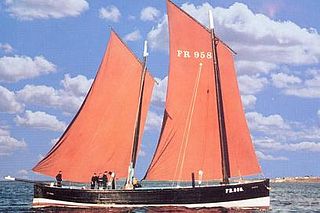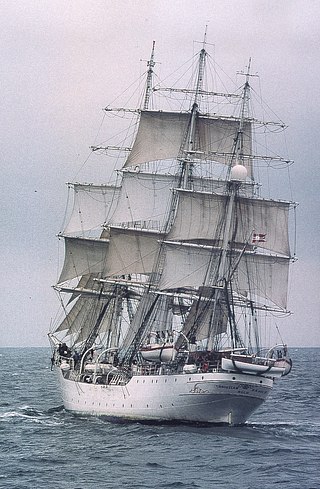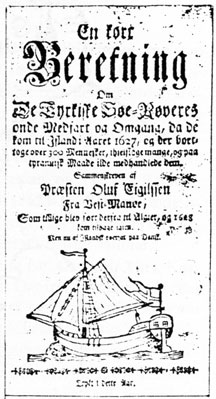
A sailing ship is a sea-going vessel that uses sails mounted on masts to harness the power of wind and propel the vessel. There is a variety of sail plans that propel sailing ships, employing square-rigged or fore-and-aft sails. Some ships carry square sails on each mast—the brig and full-rigged ship, said to be "ship-rigged" when there are three or more masts. Others carry only fore-and-aft sails on each mast, for instance some schooners. Still others employ a combination of square and fore-and-aft sails, including the barque, barquentine, and brigantine.

A sailing vessel's rig is its arrangement of masts, sails and rigging. Examples include a schooner rig, cutter rig, junk rig, etc. A rig may be broadly categorized as "fore-and-aft", "square", or a combination of both. Within the fore-and-aft category there is a variety of triangular and quadrilateral sail shapes. Spars or battens may be used to help shape a given kind of sail. Each rig may be described with a sail plan—formally, a drawing of a vessel, viewed from the side.

A barque, barc, or bark is a type of sailing vessel with three or more masts and mainmasts rigged square and only the mizzen rigged fore and aft. Sometimes, the mizzen is only partly fore-and-aft rigged, bearing a square-rigged sail above.

A staysail ("stays'l") is a fore-and-aft rigged sail whose luff can be affixed to a stay running forward from a mast to the deck, the bowsprit, or to another mast.

A cutter is a name for various types of watercraft. It can apply to the rig of a sailing vessel, to a governmental enforcement agency vessel, to a type of ship's boat which can be used under sail or oars, or, historically, to a type of fast-sailing vessel introduced in the 18th century, some of which were used as small warships.

A barquentine or schooner barque is a sailing vessel with three or more masts; with a square rigged foremast and fore-and-aft rigged main, mizzen and any other masts.

Running rigging is the rigging of a sailing vessel that is used for raising, lowering, shaping and controlling the sails on a sailing vessel—as opposed to the standing rigging, which supports the mast and bowsprit. Running rigging varies between vessels that are rigged fore and aft and those that are square-rigged.

A lugger is a sailing vessel defined by its rig, using the lug sail on all of its one or several masts. They were widely used as working craft, particularly off the coasts of France, England, Ireland and Scotland. Luggers varied extensively in size and design. Many were undecked, open boats, some of which operated from beach landings. Others were fully decked craft. Some larger examples might carry lug topsails.

The mast of a sailing vessel is a tall spar, or arrangement of spars, erected more or less vertically on the centre-line of a ship or boat. Its purposes include carrying sails, spars, and derricks, giving necessary height to a navigation light, look-out position, signal yard, control position, radio aerial or signal lamp. Large ships have several masts, with the size and configuration depending on the style of ship. Nearly all sailing masts are guyed.
This glossary of nautical terms is an alphabetical listing of terms and expressions connected with ships, shipping, seamanship and navigation on water. Some remain current, while many date from the 17th to 19th centuries. The word nautical derives from the Latin nauticus, from Greek nautikos, from nautēs: "sailor", from naus: "ship".

A full-rigged ship or fully rigged ship is a sailing vessel with a sail plan of three or more masts, all of them square-rigged. Such a vessel is said to have a ship rig or be ship-rigged, with each mast stepped in three segments: lower, top, and topgallant.

Stays are ropes, wires, or rods on sailing vessels that run fore-and-aft along the centerline from the masts to the hull, deck, bowsprit, or to other masts which serve to stabilize the masts.

A polacca is a type of seventeenth- to nineteenth-century sailing vessel, similar to the xebec. The name is the feminine of "Polish" in the Italian language. The polacca was frequently seen in the Mediterranean. It had two or three single-pole masts, the three-masted vessels often with a lateen hoisted on the foremast and a gaff or lateen on the mizzen mast. The mainmast was square-rigged after the European style. Special polaccas were used by Murat Reis, whose ships had lateen sails in front and fore-and-aft rig behind.

A foresail is one of a few different types of sail set on the foremost mast (foremast) of a sailing vessel:

A belaying pin is a solid metal or wooden device used on traditionally rigged sailing vessels to secure lines of running rigging. Largely replaced on most modern vessels by cleats, they are still used, particularly on square rigged ships.

A jackass-barque, sometimes spelled jackass bark, is a sailing ship with three masts, of which the foremast is square-rigged and the main is partially square-rigged and partially fore-and-aft rigged (course). The mizzen mast is fore-and-aft rigged.

Literally, the word pinisi refers to a type of rigging of Indonesian sailing vessels. A pinisi carries seven to eight sails on two masts, arranged like a gaff-ketch with what is called 'standing gaffs' — i.e., unlike most Western ships using such a rig, the two main sails are not opened by raising the spars they are attached to, but the sails are 'pulled out' like curtains along the gaffs which are fixed at around the centre of the masts.

A boomkin, bumkin, or bumpkin is a short spar that may project either fore or aft on a sailing vessel, depending on its function. Traditionally, it was a strong, usually wooden spar extending forward over the bow of a Western sailing ship holding a block through which the tack of the foresail was passed; on some modern sailing yachts with long main booms it is a short spar extending aft from the stern anchoring a central backstay.

A sail is a tensile structure—which is made from fabric or other membrane materials—that uses wind power to propel sailing craft, including sailing ships, sailboats, windsurfers, ice boats, and even sail-powered land vehicles. Sails may be made from a combination of woven materials—including canvas or polyester cloth, laminated membranes or bonded filaments—usually in a three- or four-sided shape.
This glossary of nautical terms is an alphabetical listing of terms and expressions connected with ships, shipping, seamanship and navigation on water. Some remain current, while many date from the 17th to 19th centuries. The word nautical derives from the Latin nauticus, from Greek nautikos, from nautēs: "sailor", from naus: "ship".



















